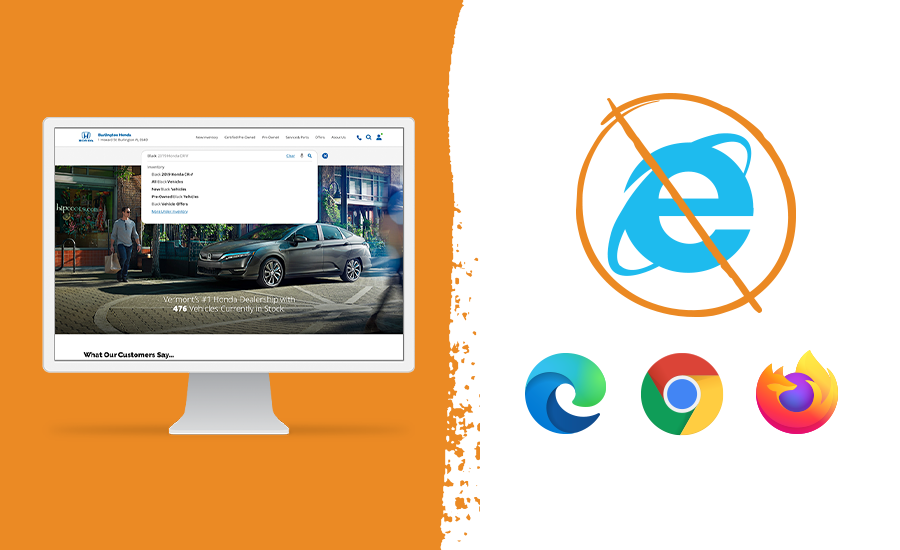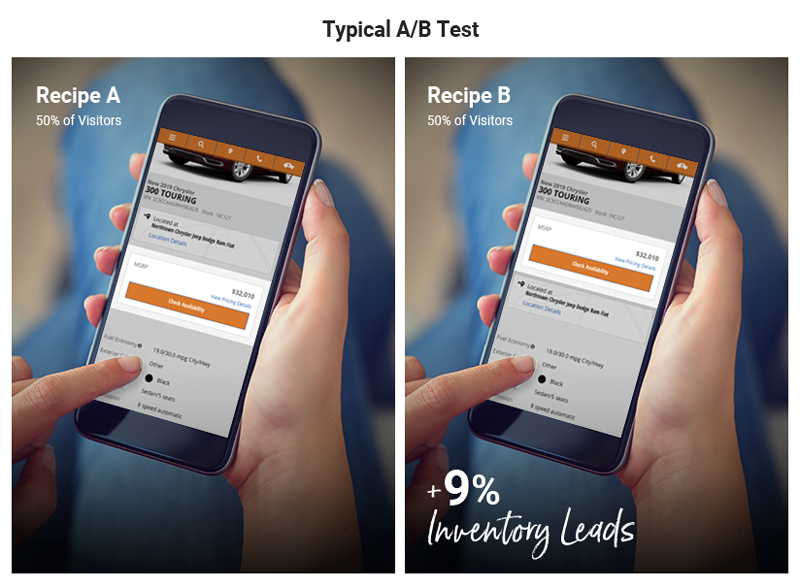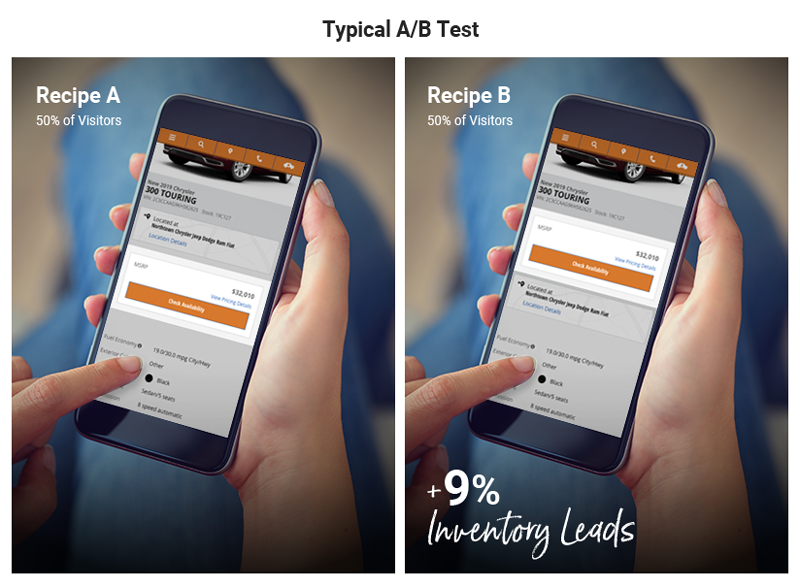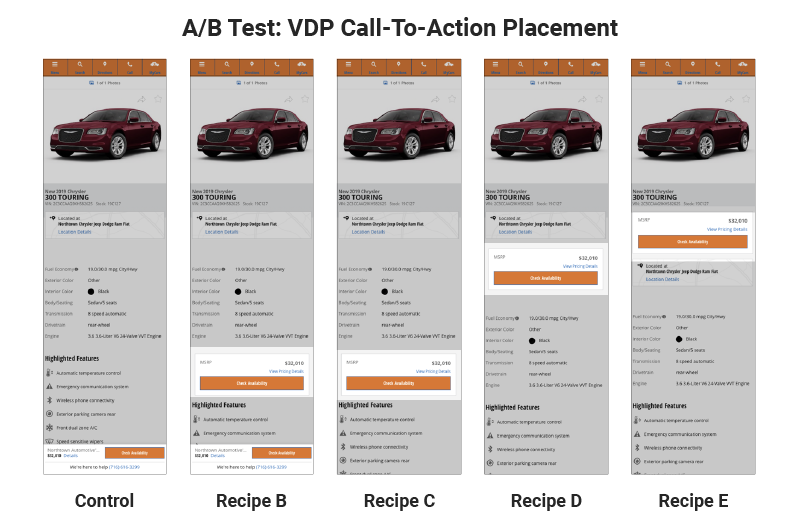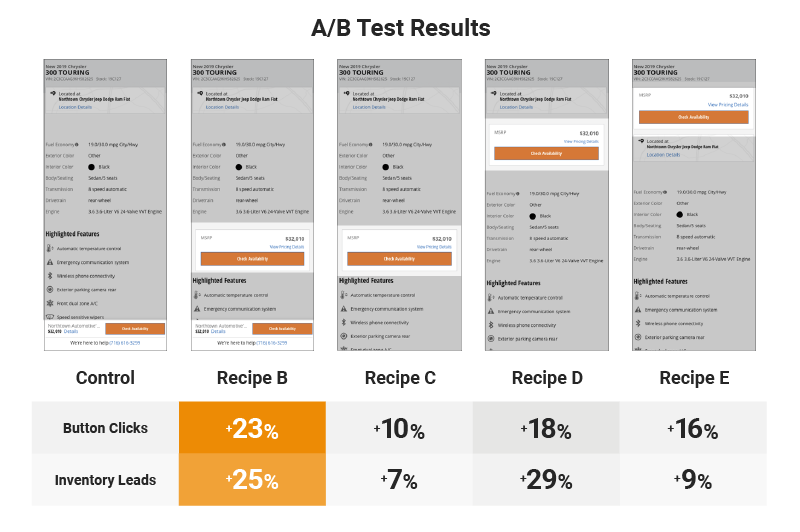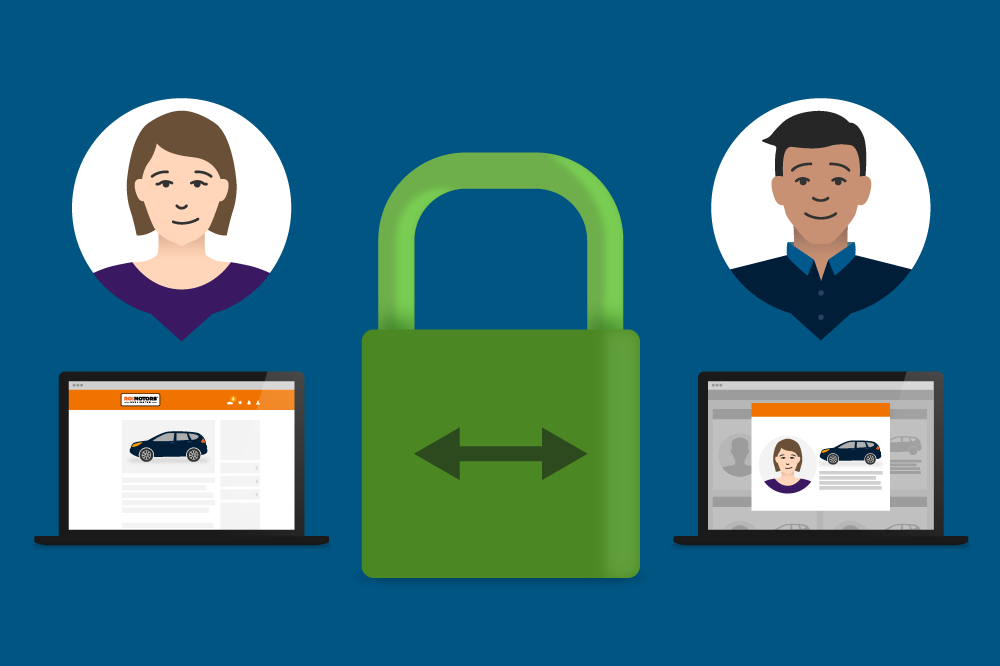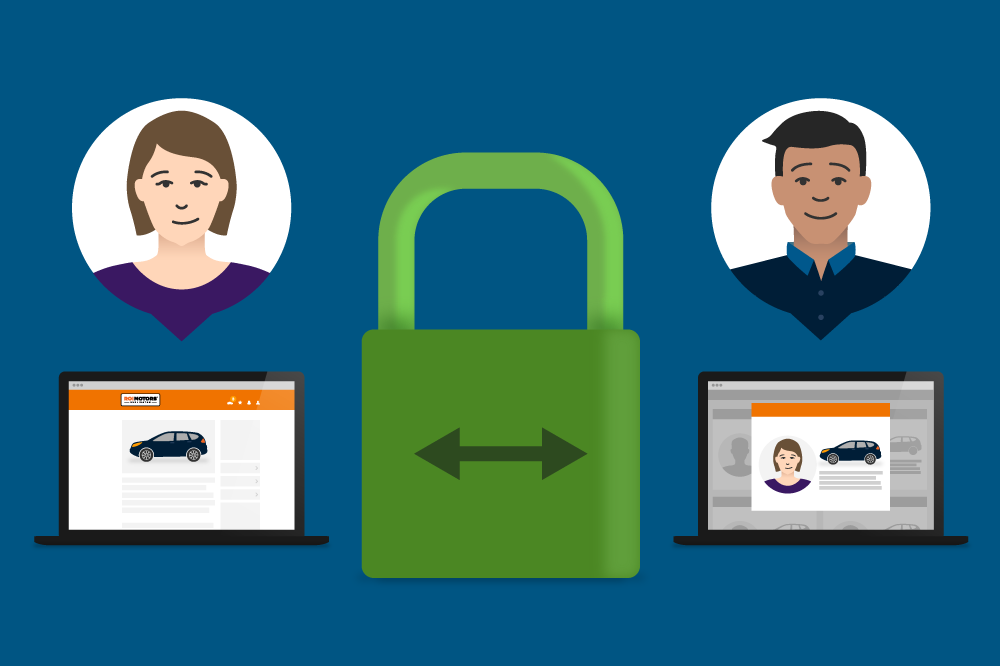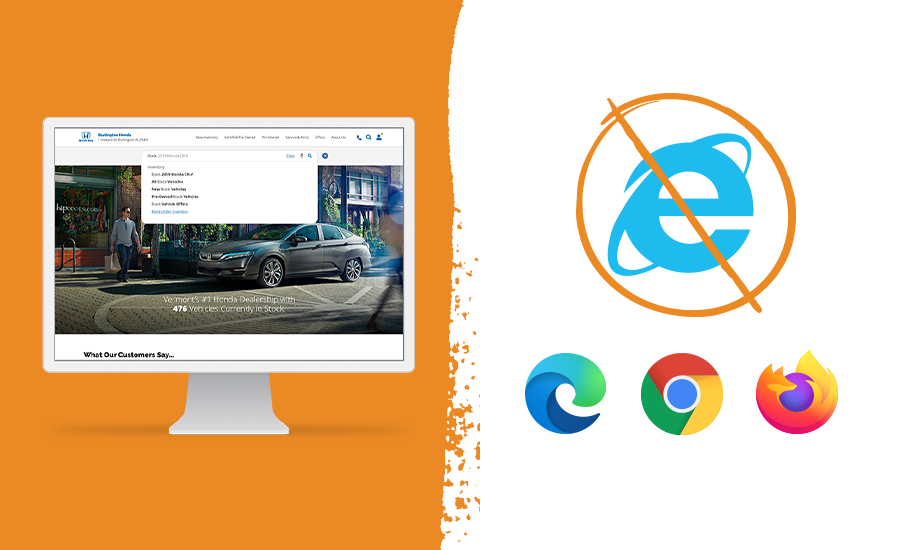
Microsoft has officially announced plans to end support for Internet Explorer 11 (IE 11) next year. Although customers that use IE 11 to access Dealer.com websites make up just 1.1% of total traffic, we will be implementing a three-phase plan to discontinue IE 11 support, while notifying these customers about the impending changes and how to access your website using a different browser.
Three Phase Plan
Effective immediately, we will no longer develop, test, or fix issues specific to IE 11 on both our ControlCenter platform and our websites. We will also begin directing customers to update their browsers to access your website in the future and provide links to download either Microsoft Edge, Google Chrome, or Mozilla Firefox.
- Phase 1: Now through early October, shoppers may access your website via IE 11 without disruption. If your dealership is using IE11, please ask your IT department to select and install a new browser.
- Phase 2: During the month of October, shoppers using IE 11 to access your website will receive a message asking them to update their browser before allowing them to continue on to your website.
- Phase 3: Then, in November, shoppers attempting to use IE 11 to access your website will be asked to update their browser prior to continuing. This will prevent users from having a broken website experience.
Benefits to Your Website
Discontinuing support of IE 11 will result in faster product development, faster website performance, and enhanced security for your Dealer.com website. In addition, modern web browsers offer many benefits to the end user, resulting in a better overall shopping experience for your customers. Here are some other benefits of this move:
- Faster Development: IE 11 is the only browser that does not meet modern web standards. For each new Dealer.com website product, feature, and enhancement, our engineering team spends extra time coding and testing specifically for IE 11. While IE 11 traffic makes up just 1.1% of total usage, it takes around 20% of our entire development time.
- Faster Performance: The extra IE 11 code takes up valuable backend website space. Reducing the overall code size will result in performance gains.
- New Features: Since IE 11 doesn’t follow modern web standards, we are not able to adopt the full suite of standards for other browsers. These new web standards allow for more creative design elements and backend functionality. Removing IE11 support opens up new opportunities for our engineering teams.
If you have any questions about this change, please reach out to your Performance Manager or contact a member of our support team.

